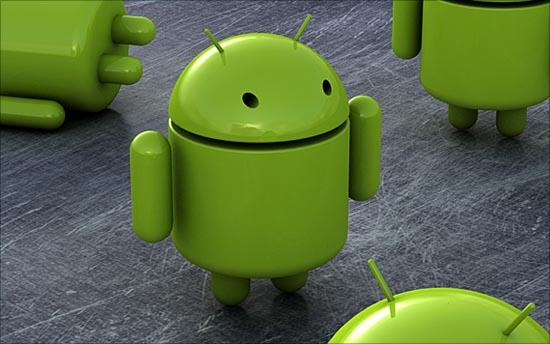
We've already seen that Verizon customers consume more data than iPhone users, but that report excluded BlackBerrys and studied all VZW users rather than focus on specific OSes. A new report from Arieso does just that, though, comparing data consumption among some of the top mobile platforms today. Using an iPhone 3G as a benchmark, Arieso measured data consumption habits of devices like the BlackBerry Bold 9700, Nexus One, HTC Desire, and iPhone 4. The iPhone 4 bested the iPhone 3G in amount of data consumed, making 44 percent more data calls and downloading 41 percent more data overall. The consumption king, though, was Android, particularly the Samsung Galaxy S and HTC Desire. Galaxy S users uploaded a total of 126 percent more data than the iPhone 3G, while the Desire users downloaded 41 percent more data than the 3G. Arieso's study also found that number of voice calls per user has stayed flat, showing that smartphone owners are using their devices for data rather than actually making phone calls. You can read the full press release below.
iPhones are usually thought to consume the most data, but this report shows that Android and its multitasking prowess gobble up even more bandwidth than those of us that tote around an iOS device. With the growth of 4G networks and the impending wave of 4G-capable devices, all smartphone users are going to have to monitor their data usage closely. If you don't, you could burn through your allotted amount pretty quickly (like in 32 minutes, in the case of Verizon's LTE). What do you all generally use your smartphones for when consuming data?
Arieso reveals hungriest users of mobile data
A series of studies, undertaken by Arieso, comparing subscriber demand for mobile data has shown that different users and different devices exhibit markedly different demands on mobile networks. The findings of this analysis using Arieso's leading edge location-aware and customer-centric network management solution, ariesoGEO, highlight the emergence of a new breed of mobile subscribers in the post-iPhone3G era, with an even more insatiable appetite for mobile data than their predecessors.
The comparison between a variety of different smartphones and connected devices - using the iPhone3G as a benchmark - shows that data call time on certain handsets can increase by as much as 250%. It also shows that the actual number of data "calls" can increase by more than 130%. In addition, uplink and downlink data volumes can increase by as much as 130% and 40% respectively.
Commenting on the findings of the studies Michael Flanagan, CTO of Arieso, said, "Smartphone subscriptions are rising and so too is subscriber appetite for mobile data. Since the launch of the iPhone3G, we've seen a multitude of popular new smartphones arrive on the market, successfully driving app and service usage. It's a trend that's set to continue. Operators must now be able to quantify the impact of the devices they support, and how subscribers use them, and prepare their networks accordingly."
Who are the data-hungriest users of them all?
The Arieso analysis compares the data consumption of users of newer smartphones, such as the BlackBerry Bold 9700, the Google Nexus One, the HTC Desire, and the Sony Ericsson Xperia, and the Apple iPhone 4, against the iPhone3G as a "normalised benchmark". The results show how different subscribers use their devices in many different ways and exhibit variable demands for mobile data.
In particular, the results show that iPhone 4 users are more hungry for data than their iPhone3G counterparts, typically making 44% more data calls, downloading 41% more data to their devices, and spending 67% more time connected to the network for data.
Arieso's analysis also show that users with handsets based on Google's Android OS software are particularly "data hungry", scoring higher than both the iPhone3G and iPhone 4 in terms of data call volumes, time connected to the network, and data volume (in kilobits per subscriber) uploaded and downloaded.
Android-powered smartphone users also score highest in both the "uplink data volume" and the "downlink data" categories. For example, Samsung Galaxy users typically upload 126% more data than iPhone3G users, and HTC Desire users download 41% more data than iPhone3G users.
But importantly, the Arieso studies also reveal that voice calls per subscriber remain roughly flat, suggesting that the new breed of smartphone subscribers use their devices first and foremost for data consumption rather than making phone calls.
"Mobile operators are playing ‘Guess Who?' with their subscribers. The variations in data use between various devices highlight the pressing need for a more accurate, in-depth and intelligent view into the potential impact of individual handset users on the network," continued Flanagan. "Right now, operators struggle to see their network as their customers see it, especially regarding performance and quality of service within individual buildings. They are risking rising operational costs, and delivering a sub-par quality of service to customers. They must adopt a new, more precise approach to monitoring and optimizing their networks."
Arieso has published the findings of its studies together with in-depth analysis in its white paper "Emerging Smartphone Trends: The Next Wave in the Data Tsunami". The white paper is available upon request.
About Arieso
Arieso has grown rapidly to become one the of world's leading providers of customer centric network management software solutions that enable operators to continuously and accurately direct investment to meet the increasing demand for rapidly growing data services. A superior alternative to outdated optimisation methods, the company's ariesoGEO technology delivers location-aware subscriber information to quickly and precisely boost network performance and enrich user experience. Arieso delivers proven carrier grade solutions that are robust, reliable and highly scalable. Clients include global Tier-1 operators and vendors such as MTN, O2, Telefonica, Vodafone, NSN, and Ericsson.